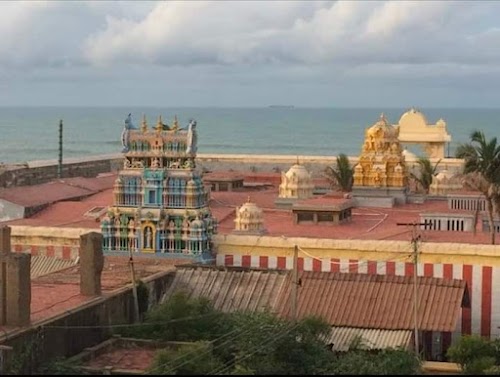
Bhagavathy Amman Temple
Kanyakumari, India
- Attend religious ceremonies and festivals
- Explore the temple's architecture and sculptures
- Meditate in the serene atmosphere
- Offer prayers to Goddess Kanyakumari
- Witness the sunrise over the ocean
Known for:
Description:
The Bhagavathy Amman Temple, located in Kanyakumari, is a significant Hindu temple dedicated to Goddess Kanyakumari, an incarnation of Parvati. Situated at the southernmost tip of India, overlooking the confluence of the Bay of Bengal, the Arabian Sea, and the Indian Ocean, the temple is a beacon of spiritual solace and architectural beauty. The deity's diamond nose ring is said to be visible from the sea, guiding ships. Pilgrims flock here to seek blessings, admire the stunning coastal views, and experience the divine energy of this sacred place. The temple's vibrant festivals, especially during Navaratri, attract large crowds. The temple complex includes other shrines and sacred spaces, adding to its spiritual significance.
History:
The history of the Bhagavathy Amman Temple is intertwined with local legends and ancient scriptures. It is believed that Goddess Kanyakumari, as a young maiden, awaited Lord Shiva's arrival for marriage. When he didn't arrive, she remained a virgin goddess. The temple's origins can be traced back to several centuries, with various dynasties contributing to its development. The Pandya, Chola, and Nayak rulers are believed to have supported the temple's growth and construction. Over time, the temple has undergone renovations and expansions, preserving its traditional architectural style. The temple continues to be a vital part of Kanyakumari's cultural and religious identity, attracting devotees from across India and the world.